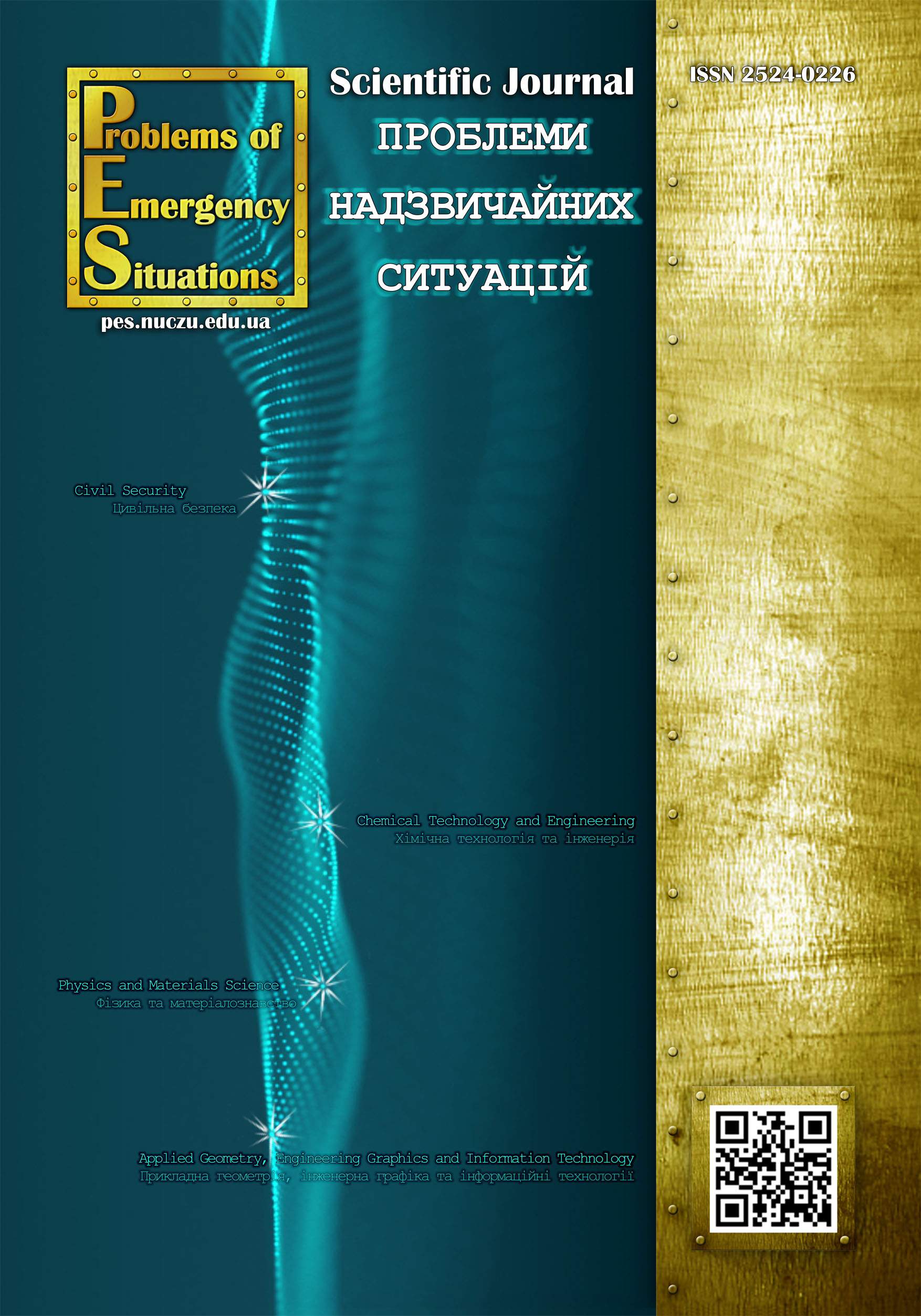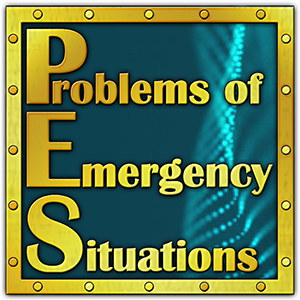Specified method of assessing the fire resistance of ribbed plates by loss of integrity
Sidnei Stanislav
National University of Civil Protection of Ukraine
http://orcid.org/0000-0002-7664-6620
DOI: https://doi.org/10.52363/2524-0226-2024-40-11
Keywords: dangerous fire factors, fire resistance, ribbed slabs, through cracks, integrity, modeling
Аnnotation
An investigation was carried out to evaluate the immersion capacity of reinforced concrete ribbed slabs at the borderline stage of loss of integrity. EN 1992-1-2 has daily diversification methods for determining the limits and class of immersiveness of reinforced concrete slabs at the limiting point of loss of integrity (E). The scientific work is aimed at directly tracking the concentration of the two boundary conditions of the immersive capacity: non-bearing capacity (R) and thermal insulation capacity (I). Experimental testing is subject to criticism due to the difficulties of fixing the sign of the onset of the borderline stage of loss of integrity, despite the need to control the unheated surface of the ribbed slab after an hour. in the case of mechanical engineering. Even the methodology for carrying out destructuring before assessing the absorbency of reinforced-concrete ribbed slabs behind the boundary mill station loses no integ-rity. In order to ensure the safe evacuation of people in the event of a fire, the protection of more or unsafe officials, as well as the effective work of the military personnel, it is necessary to stagnate the civil servants design with guaranteed immersion resistance classes. The results of the most important thermal and static problems are presented, which are related to the distribution of temperature and the stress-deformation process of a ribbed plate. Carrying out research into the ingressivity of reinforced-concrete ribbed slabs with the protection of the boundary mill at the loss of integrity has made it possible to establish the deposits between the insulation of these structures at a loss integrity depending on the level of applied mechanical strength. Removing the laying schedule makes it possible to evaluate reinforced concrete ribbed slabs based on the criterion of the moment of the boundary stage of loss of integrity, which makes it possible to evaluate more objectively the immersiveness of such future constructions.
References
- Nilimaa, J. (2023). Smart materials and technologies for sustainable concrete construction. Developments in the Built Environment, 15, 100177. doi: 10.1016/j.dibe.2023.100177
- State Enterprise "UkrNDICZ". (2016). Fire safety of construction sites. General requirements: DBN B.1.1-7:2016 [Effective from 01.06.2017]. Kyiv: SE "UkrNDICZ".
- State Enterprise "State Research Institute of Building Structures". (2013). Design of reinforced concrete structures. Part 1-2. General provisions. Calculation of structures for fire resistance (EN 1992-1-2:2004, IDT). Amendment No. 1: DSTU-N B EN 1992-1-2:2012 Eurocode 2 [Effective from 01.07.2014]. Kyiv: SE "State Research Institute of Building Structures".
- Sidnei, S., Nekora, О., Rudeshko, I., Berezovskyi, A., Kostenko, T., Ishchenko, I. (2023). Research on fire resistance of reinforced concrete ribbed slab. Emergencies: Prevention and Elimination, 7(2), 217–226. doi: 10.31731/
2636.2023.7.2.217.226 - Kropyva, M. O. (2016). Improvement of the calculation method for assessing the fire resistance of steel-reinforced concrete slabs with internal I-beam steel girders (PhD dssertation, Lviv State University of Life Safety, Lviv).
- Renkas, A. A. (2019). Ensuring fire resistance of reinforced concrete hollow-core slabs using sheet building materials. Collection of Scientific Works Fire Safety of Lviv State University of Life Safety, 34, 72–77. doi: 10.32447/20786662.34.2019.12
- Kovalov, A. I. (2012). Improvement of the method for assessing the fire protection capacity of coatings of reinforced concrete floors (Abstract of PhD dissertation, UkrNDICZ, Kyiv).
- Perehin, A., Nuianzin, O., Shnal, T., Shchipets, S., & Myroshnyk, O. (2023). Improvement of means for assessing fire resistance of fragments of reinforced concrete structures. AIP Conference Proceedings, 2684(1), 030032. doi: 10.1063/5.0120061
- Kovalov, A., Otrosh, Y., Ostroverkh, O., Hrushovinchuk, O., Savchenko, O. (2018). Fire resistance evaluation of reinforced concrete floors with fire-retardant coating by calculation and experimental method. E3S Web of Conferences, 60, 00003.
- Sidnei, S., Myroshnyk, O., Kovalov, A., Veselivskyi, R., Hryhorenko, K., Shnal, T., Matsyk, I. (2024). Identifying the evolution of through cracks in iron-reinforced hollow slabs under the influence of a standard fire temperature mode. Eastern-European Journal of Enterprise Technologies, 4(7), 70–77. doi: 10.15587/1729-4061.2024.310520
- Dzidic, S. (2023). Fire resistance of reinforced concrete slabs. IntechOpen. doi: 10.5772/intechopen.1001046














